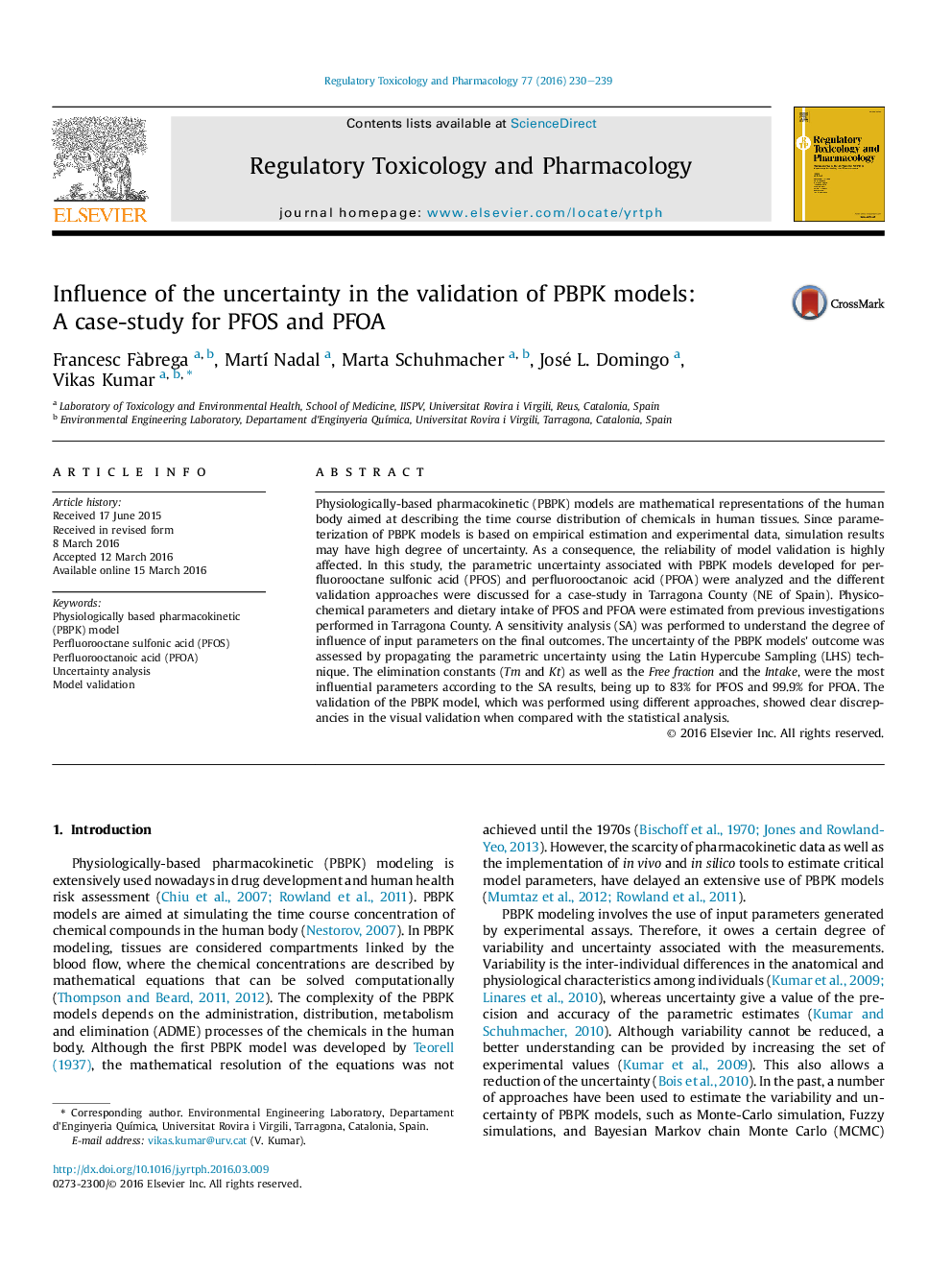| Article ID | Journal | Published Year | Pages | File Type |
|---|---|---|---|---|
| 5856007 | Regulatory Toxicology and Pharmacology | 2016 | 10 Pages |
â¢PBPK models for PFOA and PFOS were validated.â¢Different validation techniques were compared.â¢Visual validations of models are often erroneous.â¢Validation of PBPK models are highly influenced by parametric uncertainty.â¢Model validation should increase transparency and reduce discrepancies in scientific reporting.
Physiologically-based pharmacokinetic (PBPK) models are mathematical representations of the human body aimed at describing the time course distribution of chemicals in human tissues. Since parameterization of PBPK models is based on empirical estimation and experimental data, simulation results may have high degree of uncertainty. As a consequence, the reliability of model validation is highly affected. In this study, the parametric uncertainty associated with PBPK models developed for perfluorooctane sulfonic acid (PFOS) and perfluorooctanoic acid (PFOA) were analyzed and the different validation approaches were discussed for a case-study in Tarragona County (NE of Spain). Physicochemical parameters and dietary intake of PFOS and PFOA were estimated from previous investigations performed in Tarragona County. A sensitivity analysis (SA) was performed to understand the degree of influence of input parameters on the final outcomes. The uncertainty of the PBPK models' outcome was assessed by propagating the parametric uncertainty using the Latin Hypercube Sampling (LHS) technique. The elimination constants (Tm and Kt) as well as the Free fraction and the Intake, were the most influential parameters according to the SA results, being up to 83% for PFOS and 99.9% for PFOA. The validation of the PBPK model, which was performed using different approaches, showed clear discrepancies in the visual validation when compared with the statistical analysis.
